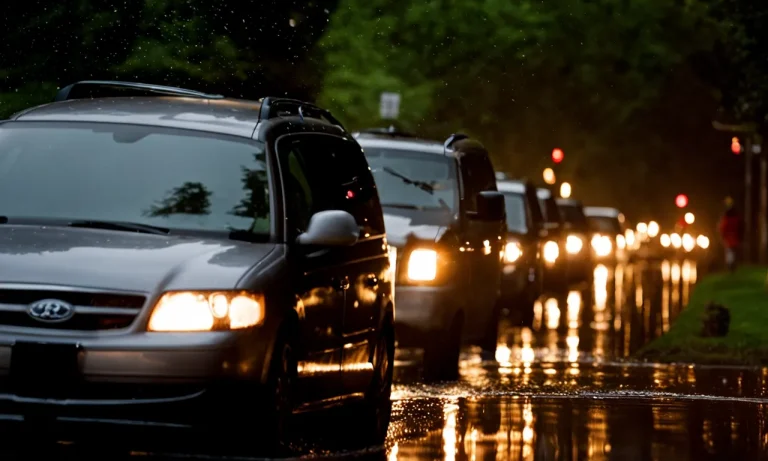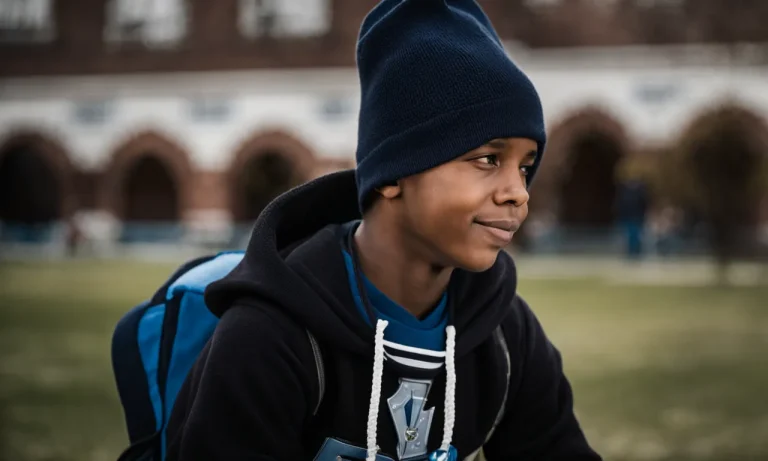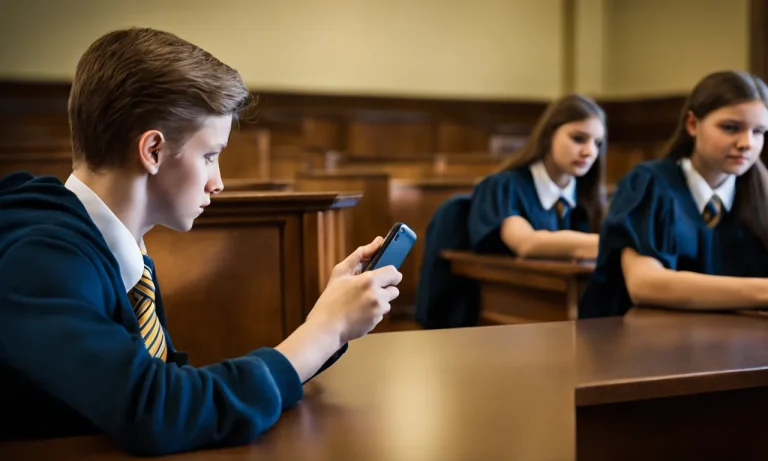School rules are meant to create a safe and productive learning environment for students. However, some outdated or overly strict rules can do more harm than good. If you’re wondering what school rules could use an update, here are some ideas.
School dress codes are one area that could use more flexibility. Banning tank tops and short skirts due to concerns over ‘distractions’ places unfair blame on girls. A better approach is having reasonable guidelines, like requiring shoes and non-offensive clothing.
Rules on Technology and Internet Use
Technology plays a significant role in our lives, and it is essential for schools to adapt their rules and policies to reflect this reality. The rules on technology and internet use in schools should be designed to promote responsible use, ensuring that students are able to harness the power of technology for educational purposes while also providing a safe and secure environment.
Here are some areas where changes can be made:
Allow Responsible Tech Use
Gone are the days when technology was seen as a distraction in the classroom. In fact, research has shown that when used correctly, technology can enhance learning and engagement.
Schools should consider allowing responsible tech use during specific times or subjects, where students can use their devices to access educational resources, collaborate with peers, or conduct research.
By embracing technology in this way, schools can better prepare students for the digital world they will enter after graduation.
View this post on Instagram
Update Cell Phone Policies
Cell phones have become an integral part of our lives, and students are no exception. Rather than implementing strict bans, schools should update their cell phone policies to allow for responsible use.
This could include allowing students to use their phones during designated breaks or for educational purposes, such as using educational apps or accessing online resources. By teaching students how to use their cell phones responsibly, schools can help them develop crucial digital literacy skills.
Rethink Internet Blocks and Monitoring
While it is important to protect students from potentially harmful content, overly restrictive internet blocks and constant monitoring can hinder their access to valuable educational resources. Instead of blocking access to entire websites or platforms, schools should consider implementing more sophisticated filtering systems that allow access to appropriate content while still ensuring a safe browsing experience.
Additionally, schools should strike a balance between monitoring student internet activity for safety purposes and respecting their privacy. Trusting students to make responsible choices online can empower them to develop good digital citizenship skills.
It is worth noting that implementing these changes requires careful planning and consideration of the unique needs and challenges of each school. By revisiting and updating rules on technology and internet use, schools can create an environment that fosters responsible tech use while preparing students for the digital age.
Disciplinary Rules
Disciplinary rules in schools play a crucial role in maintaining order and ensuring a conducive learning environment. However, there are certain rules that may need to be reconsidered and revised to better serve the students. Let’s explore some areas where changes can be made.
Reduce Suspensions and Expulsions
Suspensions and expulsions have long been the go-to punishments for serious behavioral issues in schools. However, research has shown that these disciplinary measures often do more harm than good.
Instead of addressing the root causes of the problem, suspensions and expulsions can perpetuate a cycle of negative behavior.
It is important to find alternative strategies that focus on addressing the underlying issues and helping students learn from their mistakes.
According to current evidence, schools with high suspension rates tend to have lower academic achievement and higher dropout rates. This suggests that there is a need for a shift in disciplinary practices towards more restorative and rehabilitative approaches.
By providing counseling, mentorship, and other support systems, schools can help students learn from their mistakes and develop the necessary skills to overcome their challenges.
Find Alternatives to Detention
Detention has long been a common disciplinary measure used in schools. However, there is growing evidence that suggests that detention may not be an effective way to address behavioral issues. Instead of simply punishing students by isolating them in a room, it is important to explore alternative approaches that promote learning and personal growth.
Some schools have started implementing programs such as restorative justice circles, where students engage in open discussions to resolve conflicts and find solutions together. This approach focuses on repairing harm, building empathy, and fostering a sense of community.
By involving students in the process, they learn valuable communication and conflict resolution skills that can benefit them in the long run.
Reconsider ‘Zero Tolerance’ Approaches
‘Zero tolerance’ policies have gained popularity in schools as a way to address serious disciplinary issues. However, critics argue that these policies often lead to harsh and disproportionate punishments, especially for minor infractions.
Instead of treating every offense as equally severe, it is important to consider the context and circumstances surrounding the behavior.
Research has shown that ‘zero tolerance’ policies can disproportionately impact certain student groups, such as students of color and students with disabilities.
According to a report by the American Civil Liberties Union, these policies contribute to the school-to-prison pipeline, pushing students out of school and into the criminal justice system.
By adopting a more flexible and individualized approach, schools can better address disciplinary issues while also taking into account the unique needs and circumstances of each student. This could involve implementing restorative justice practices, providing counseling and support services, and focusing on prevention rather than punishment.
Attendance and Tardiness Rules
Attendance and tardiness rules are an integral part of any school’s policies, aimed at ensuring that students are present and punctual for their classes. However, there are certain aspects of these rules that could be reconsidered and changed to better serve the needs of students.
Here are some suggestions for improving attendance and tardiness policies:
Focus on Reasons Behind Absences
Instead of simply focusing on the number of absences, schools should also prioritize understanding the reasons behind them. Many students may have legitimate reasons for missing school, such as illness or family emergencies.
By taking the time to address these reasons and provide support, schools can create a more compassionate and understanding environment.
Students who feel supported and understood are more likely to attend school regularly and perform better academically.
By adopting a more empathetic approach, schools can help reduce absenteeism and create a positive learning environment.
View this post on Instagram
Reconsider Punitive Tardiness Policies
Punitive measures for tardiness, such as detention or suspensions, may not always be effective in addressing the underlying reasons behind it. Instead, schools should consider implementing alternative strategies that focus on prevention and support.
For example, implementing a mentorship program where older students help younger ones navigate the challenges of getting to school on time could be more beneficial.
According to an article by Education Week, many teachers believe that addressing the root causes of tardiness, such as transportation issues or unstable home environments, would be more helpful than punitive measures.
By addressing the underlying issues, schools can better support their students and promote a culture of punctuality.
Address Truancy Through Outreach, Not Punishment
Truancy, or unexcused absences, is a serious issue that requires attention. However, punishing students for truancy may not always be the most effective approach. Instead, schools should focus on outreach programs that aim to understand the reasons behind truancy and provide support to students and their families.
A study conducted by Child Trends found that schools that implemented outreach programs saw a decrease in chronic absenteeism. By working closely with families, schools can identify and address the barriers that prevent students from attending school regularly.
View this post on Instagram
Extracurricular and Social Rules
Rethink Selective Extracurricular Admission
One of the rules that should be reconsidered is the selective admission process for extracurricular activities. While it is important to maintain a certain level of skill or commitment for certain clubs or teams, overly strict admission criteria can be exclusionary.
Schools should consider offering a wider range of extracurricular options that cater to different interests and abilities. This would allow more students to participate and explore their passions, fostering a more inclusive and diverse school community.
Allow More Flexibility in Social Activities
Schools often have strict rules when it comes to social activities, such as lunchtime or recess. While it is important to maintain order and ensure a safe environment, too many restrictions can stifle creativity and limit social interactions.
Allowing students more flexibility in choosing how they spend their free time can encourage them to develop important social skills, explore new friendships, and engage in activities that they are genuinely interested in.
By creating a more relaxed and open atmosphere, schools can foster a sense of autonomy and independence among students.
Reconsider Overly Strict Rules on Dances and Events
Dances and events are an integral part of the high school experience, providing students with opportunities for socializing and making memories. However, some schools have excessively strict rules that can dampen the fun and excitement of these occasions.
While it is important to ensure a safe and respectful environment, schools should reconsider rules that are overly restrictive or unnecessary. By finding a balance between maintaining order and allowing students to enjoy themselves, schools can create memorable experiences that contribute to a positive school culture.
Rules That Enforce Conformity
Schools often have rules in place that enforce conformity among students. These rules can include strict grooming and appearance codes, limited individualism, and restrictions on self-expression. While the intention behind these rules may be to maintain a certain level of discipline and order, they can also stifle creativity and hinder personal growth.
Loosen Grooming and Appearance Codes
One rule that often enforces conformity in schools is strict grooming and appearance codes. These codes typically dictate how students should wear their hair, what clothes they can wear, and whether or not they can have visible piercings or tattoos.
While it is important for students to maintain a neat and professional appearance, overly strict grooming codes can limit self-expression and prevent students from embracing their individuality.
Loosening grooming and appearance codes can allow students to express themselves and be more comfortable in their own skin. It can also promote diversity and inclusivity, as students from different cultural backgrounds may have different grooming practices or styles.
By allowing students to have more freedom in their appearance, schools can foster a sense of acceptance and encourage students to embrace their uniqueness.
Allow More Student Individualism
Another rule that enforces conformity in schools is the limited allowance for student individualism. Many schools have strict dress codes that require students to wear uniforms or adhere to a specific dress policy.
While uniforms can promote a sense of unity and equality, they can also suppress students’ ability to express their personal style and identity.
Allowing more student individualism in terms of dress can help foster creativity and self-confidence. It allows students to showcase their personality and express themselves through their clothing choices.
This can lead to a more positive and inclusive school environment, where students feel comfortable being themselves and embracing their unique qualities.
Rethink Restrictions on Self-Expression
Restrictions on self-expression, such as limitations on hairstyles, accessories, or body modifications, also contribute to enforcing conformity in schools. These rules may be in place to maintain a sense of professionalism or to prevent distractions, but they can also hinder students’ ability to express themselves and explore their identity.
By rethinking these restrictions and allowing students more freedom to express themselves, schools can create a more inclusive and supportive environment. Encouraging self-expression can help students develop their sense of identity, boost their self-esteem, and foster a greater sense of belonging within the school community.
It is important to note that while loosening rules that enforce conformity can have many positive effects, it is also essential to strike a balance between individualism and maintaining a respectful and inclusive learning environment.
Schools should aim to create an atmosphere where students feel comfortable expressing themselves while also understanding the importance of respecting others.
Conclusion
While school rules aim to create positive learning environments, some are due for an update. With a few adjustments to modernize outdated policies, schools can support students’ wellbeing, growth and success in a better way.






